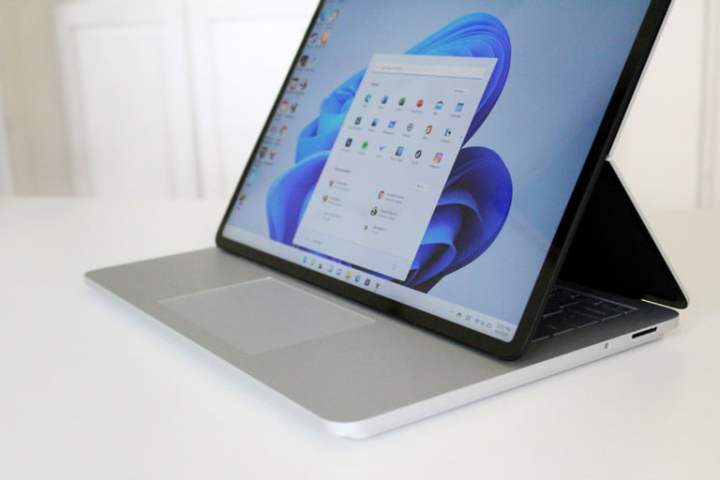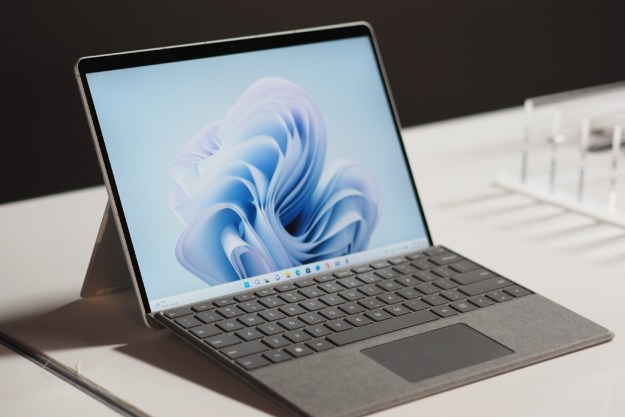
Microsoft’s Surface line has become iconic in a few different ways, but performance was never its strong suit. However, according to rumors that have been building throughout this year, we’ll be getting the most powerful Surface device we’ve ever seen later this year.
The product in question is the Surface Laptop Studio 2, a follow-up to the debut of the design in 2021. That initial Surface Laptop Studio was already the most powerful device in the lineup as the replacement of the previous Surface Book designs. Most importantly, these are the only Surface devices to get discrete graphics, making them the best options for creatives and gamers. Of course, that device was unique for its form factor — but performance was a big selling point too.
Two years later, though, reports show that we’re getting a sequel to the Surface Laptop Studio that could increase performance in three important ways.
First off, the Surface Laptop Studio 2 is rumored to get the bump to Nvidia’s RTX 40-series graphics. A leaked Geekbench run was posted on Twitter earlier this year that showed a configuration with the RTX 4060, which likely represents the most powerful option available. The generational bump will be significant, but beyond that, the Surface Laptop Studio was limited to just the RTX 3050 Ti, never offering an RTX 3060. The RTX 40-series also comes with DLSS 3 and Frame Generation, which boosts frame rates further in games that support it.
Secondly, the Surface Laptop Studio 2 may finally provide a more powerful processor. One of the major hang-ups with the Surface Laptop Studio was its use of a 35-watt processor, the Intel Core i7-11370H. Now, that same Geekbench leak shows the Surface Laptop Studio 2 will use the Core i7-13800H. Not only is this a proper 45-watt part like the ones featured in competitive systems, but it also has 14 cores, split between six Performance cores and eight Efficiency cores. That’ll be a huge jump in performance over the quad-core part used in the original laptop. It’ll also provide an even larger performance delta between this and the Surface Laptop 5 (or Surface Laptop 6, for that matter).

Lastly, the Surface Laptop Studio 2 may also get support for higher memory capacity than we’ve seen before. The previous model capped out at 32GB, but this new model may get 64GB. Again, this makes it more competitive with similar laptops from other manufacturers and expands its possible demographic to those who could actually put this much RAM to use. It should be noted that the 14-inch MacBook Pro offers up to 96GB, though that’s hardly the standard.
Microsoft holds an annual Surface hardware launch each fall, and the Surface Laptop Studio 2 is expected to make an appearance there, along with a new Surface Pro, Surface Laptop, and more. Zac Bowden of Windows Central reportedly confirmed with sources that the Surface Laptop Studio 2 has been code-named internally as “Ersa” and will, indeed, be announced later this year.
I, for one, am excited that Microsoft is continuing the Surface Laptop Studio line and not delaying it further. I love the design, the multiple modes of use, and the gorgeous screen. I was worried after an update was skipped in 2022, but this more powerful model might be exactly what I’ve been waiting for.
Editors' Recommendations
- Surface Pro 10: all the major changes rumored for the new model
- A new wave of powerful laptops rises to challenge the MacBook Pro
- The Surface Pro 10 sounds amazing, and it may be coming soon
- I tested 3 years of mini-LED gaming laptops, and I was shocked by the results
- The Surface Pro could finally live up to its potential this year


